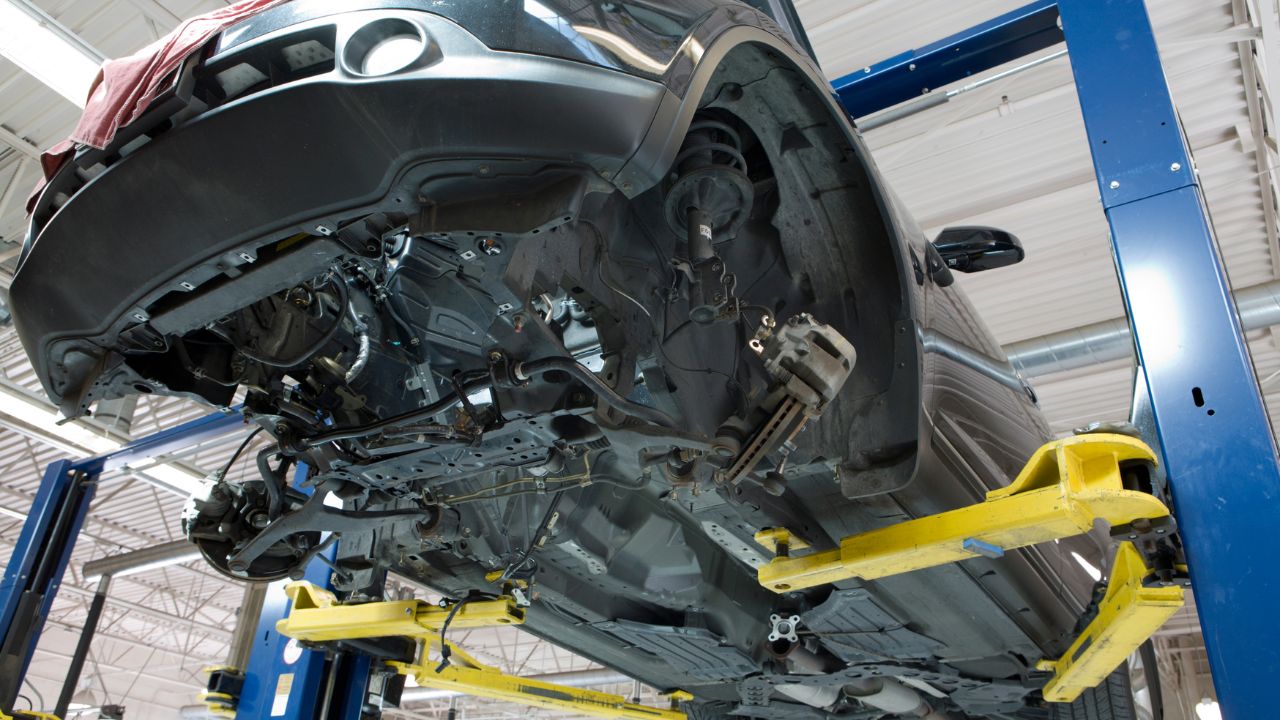
This article will cover how to change your headlight bulb for halogen or high-intensity discharging (HID). We'll also cover how to inspect your headlights to determine whether they are aimed correctly and whether the plastic housing has been oxidized. The final step is to find out if the fuse has blown. If you've followed these steps, your car's headlights should now shine brightly and efficiently.
Replace a halogen (HID) or high-intensity light bulb
The halogen halogen light bulb is one the most well-known types of headlight bulb available today. This bulb is the most widely used and most loved by drivers. It has been in use for many decades. In the next few years, however, this technology could be challenged and replaced by more advanced technologies. Let's learn about the different features and how to change a halogen halogen headlight bulb.
First, turn off your vehicle and take out the headlight fuse. Your vehicle's handbook should provide the appropriate fuse to remove. Once you have taken out the fuse, you are ready to begin removing headlamp bulbs. Before you try to remove the headlight bulb, make certain that the cover is removed from the vehicle. Then twist the bulb out of its socket.

Be sure to check the direction of your headlights
Make sure your headlights have been properly aligned before you start driving. Place your vehicle against a wall and align the front of the headlights with the aiming chart. Then, turn off the light source and compare your alignment to the guide. You should be able to see a slight difference, or vice versa. They could blind you or cause your insurance to be voided if they are too close or too far away.
It can be difficult to aim your headlights correctly. Professional help is a wise decision. Although you can adjust your headlights at home, it's best to get professional help. Misaligned headlights can pose danger for other drivers and could lead to tickets from the authorities. If you're unsure, you can ask the dealership to check it for you. Many dealerships will inspect your headlights free of charge.
Inspect the plastic housing for signs and symptoms of oxidation
Check whether the plastic covering is corroding or has suffered other damage when replacing your headlights. While oxidation is less noticeable in the long run than damage to metal, it can still affect the appearance. Plastic headlights are not designed for style, but are built for strength. The protective film on the plastic housing may begin to peel over time. This can lead to blurred vision and blurred vision.
Start by getting rid of any oxidation. You can use abrasive discs or sanding plates to clean the surface. You can also use plastic polish to remove oxidation that is only superficial. You should not use household glass cleaners or polishes on clear plastic. Once the headlights are clean, apply a coat of automotive polish.

For a blown fuse, check the fuse box
If your headlights stop working, you may need to replace the fuse. You should have a fuse for your headlights that is 15 amps. However, if in doubt, you can turn the lights off. Sometimes, it's easier to replace the fuse than to change the headlights themselves. This is how to check for a blown fuse.
Locate the fuse box under the engine or on the dashboard to check for a blown fuse. The fuses regulate the beam height and intensity of the headlight. They are relatively inexpensive and easy to replace. It is important to ensure that the fuses have identical color, ampere rating, contact, and contact at terminals. If the fuses are the identical color, then the wiring inside the headlights can be as well.
FAQ
What qualifications do I need to become a mechanic?
To become a technician, you will need to pass a series exams. These include:
-
A general knowledge test
-
A practical exam
-
An apprenticeship test
These tests are meant to help you grasp the fundamentals of mechanical engineering and physics, before you begin your journey as a mechanic.
Once you've passed these tests, you'll be eligible to work as a mechanic. An apprenticeship is still required. This will require you to learn the trade.
To fully understand the mechanics of vehicle repairs, you'll need workshops and classes. You'll also have to work alongside experienced mechanics.
To be a successful mechanic, you will need to have a high degree of concentration and attention. Repairs to vehicles require you to pay attention to every detail.
To become a successful mechanic you'll need patience. This may not be the career path that you want if you aren't able to follow directions.
But if you love cars and enjoy fixing them, you could be very happy in this line of work.
What length is an automotive mechanic apprenticeship?
The apprenticeship to become an automotive mechanic takes about three years. It includes two years of school and two years as an apprentice. The first year is dedicated to learning the theory and practical skills of the trade. During this time, you'll also learn how to use tools safely and efficiently. After completing the first year, you'll then spend another year on-the-job training where you'll gain experience in different areas of the trade. You will have the opportunity for formal training during these years.
The final year of this program is spent in obtaining qualifications and becoming certified in your field. These include NVQs (National Vocational Qualifications), that are given after passing specific industry exams. Additionally, HNCs are Higher National Certificates that cover general subjects such management, customer service, and business administration. City & Guilds certificates may be available for those who are interested in becoming qualified in specific trades.
To work as an automotive mechanic, do I need a degree? Can I do part-time studies?
While a degree is not required, it does help. Employers will prefer candidates who have completed a degree. It shows that you've put the effort in and have done everything possible to succeed.
However, it doesn't mean you can't still work while studying. Many universities permit students to take courses during the summer holidays, and then finish their studies in the fall. Other universities permit students to take classes part-time during the school year.
How do I prepare to be a mechanic apprentice?
It is important to have an understanding of what you are going into. You must understand the workings of cars. This will allow you to be prepared for your first day at work.
You will also need to learn how to fix simple problems like tires and broken lights.
These lessons will help you to identify and fix problems.
Also, it is important to know how parts fit together so that you can put them back together.
Finally, be proficient in using tools safely and efficiently.
These things will enable you to be a competent mechanic.
What are the requirements of an auto technician?
You must have high school, or GED, and be able to read and write well in English and math. It is also necessary to be able both to read and to write. To be allowed to work, you must pass a written and practical test.
Statistics
- There were 749,900 jobs available for automotive service technicians and mechanics in 2016, which is expected to grow by six percent through 2026. (jobhero.com)
- Apprentice mechanics earn significantly less hourly than mechanics who have completed training, with a median wage of approximately $14.50 an hour, according to PayScale. (jobhero.com)
- 52% of Mechanics in the United States think their salaries are enough for the cost of living in their area. (indeed.com)
External Links
How To
How to properly diagnose and repair your vehicle
Before you can determine if your car requires repairs, it's important to first analyze the symptoms. You can then follow these steps for a proper diagnosis of your vehicle.
-
Check engine lights. Check the dashboard light indicators such as the engine light indicator, the oil pressure gauge, the battery light indicator, the coolant temperature gauge, and the RPM gauge. It could indicate that your vehicle is having problems.
-
Take a look at the treads. If the tires are worn out, they could cause problems with handling and braking. The treads of the wheels should be inspected as well. They should be smooth and clean. The best way to do this is to remove the wheels and take them off. Use a flashlight to see how well the treads are worn.
-
You should always monitor the level brake fluid. It is important to keep track of how much brake fluid you have in your car. You can ensure that your brakes are working properly by monitoring the level of brake fluid in your vehicle. If the brake fluid level is low, your brakes might fail when you apply pressure to them.
-
You should test the suspension system. Vehicles usually have a suspension system that helps absorb shocks and vibrations while driving. It improves control and allows for smoother accelerations or decelerations. A suspension problem can cause your vehicle to feel wobbly and shake uncontrollably. You can test if your vehicle has a suspension problem by putting weight on either the front or back axle to see how it moves.
-
Examine the steering column. The steering column connects the steering wheel to all other components of the vehicle. Accidents often damage steering columns. You should replace your steering column if it feels loose or unstable.
-
Observe the exhaust pipe. Exhaust pipes move gases from combustion chamber to atmosphere. If your exhaust pipe leaks or cracks, it will allow harmful fumes into your cabin. It is also important to repair any bends in your tailpipe immediately.
-
Look under the hood. To check for unusualities, look under the hood. Leakage of fluids in your engine could indicate that it is leaking. If you smell something strange coming from your engine compartment you should call a professional technician.
-
Make sure to check the air filter. Your vehicle's air filter collects dust and debris from the outside environment. Vehicles that have a dirty air filter will not run well. Replace your air filter regularly.
-
Make sure you check the fan belt. Your vehicle's fan belt connects the engine to the transmission. If it breaks, the engine won't turn over. The process of replacing the belt is straightforward. All you need are a screwdriver & pliers.
-
Verify the radiator hoses. The radiator hose transports water from radiator to engine. If it becomes cracked or damaged, it can leak hot liquid onto the engine. To repair the leaky hose, all you need is a pair if needle-nosepliers.
-
You should inspect the windshield wipers. Windshield wipers use electricity to remove snow and rain. If they stop working, streaks could be left on your glass. Change the washer fluid to fix the problem.
-
You should inspect the cables. Batteries provide power to electrical systems inside your car. Make sure you disconnect the negative cable before replacing batteries. Failure to do so can damage your alternator.
-
Be sure to check your headlights. The headlights provide illumination for the road ahead. If they don't work properly, it can cause poor visibility. To determine if your bulbs are out of date, check them.
-
Make sure you have your lights on. You can warn other drivers if you approach them at night. One that doesn't work could cause you to be distracted, and possibly lead to an injury.
-
Check your brakes. Brakes will reduce the speed of your car in case of an accident. If the brakes fail to work correctly, your car could lose control and collide with another vehicle.
-
Check the oil regularly. The oil keeps your engine well lubricated. It helps prevent metal parts from wearing out too quickly. It is recommended to change the oil once a month.